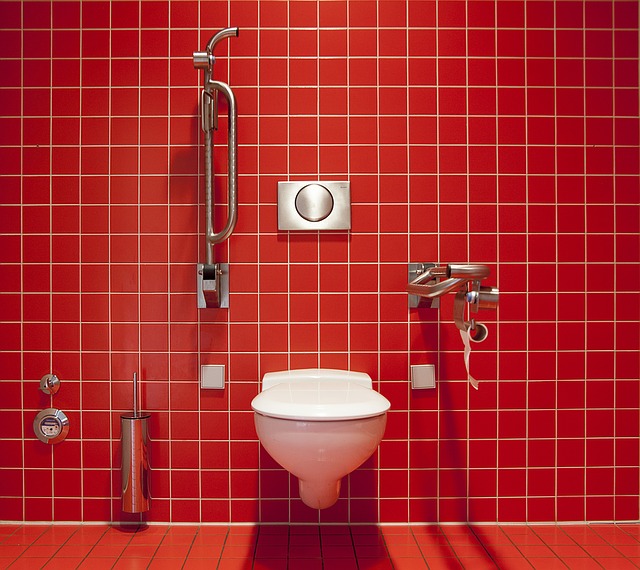Lavatory
In modern usage, the term ‘lavatory’ (UK pronunciation: ‘lavah-tree’) describes a room or cubicle containing sanitaryware or other receptacles for the passing of human waste. The sanitaryware will usually be connected to a public drainage system.
When used to describe a room, a lavatory may also contain other sanitaryware, such as a bath, shower, urinal or bidet. Other ancillary facilities may typically include wash-hand basins, hot air dryers, towels and mirrors.
The term lavatory is sometimes used synonymously:
- Toilet
- WC (although this more correctly refers to the water closet sanitaryware itself)
- Bathroom (if it contains a bath)
- Loo
- Washroom
- Ladies / gents
- Sanitary convenience
- Powder room
Historically, a lavatory was a cistern or trough where the inmates of monastic establishments could wash their hands and faces, as well as their surplices and vestments.
See Lavatorium.
In southern Germany, lavatories took on grander functions that resembled those of baptistries. They would be either square or octagonal chambers to the side of a cloister and would have a series of water troughs for washing arranged around a fountain located centrally in the room.
The term lavatory was also given to a ‘piscina’ – a drain that was originally connected to Roman aqueducts but which later was applied to a stone basin near a church altar.
Legal requirements for sanitary conveniences, washing facilities and bathrooms are set out in Part G of the building regulations, with solutions to common situations described in Approved Document G (Sanitation, hot water safety and water efficiency).
NB The Scottish Building Standards, Part I. Technical Handbook – Domestic, Appendix A Defined Terms, defines a toilet: ‘…an enclosed part of a storey which contains a watercloset, a waterless closet or a urinal, which are properly installed for use.’
[edit] Related articles on Designing Buildings
- Approved Document G.
- Bidet.
- Cistern.
- Earth closet.
- ECA Water Scheme.
- Garderobe.
- Gas fired toilet.
- Inclusive design.
- Lavatorium.
- Macerating toilet systems.
- Passive water efficiency measures.
- Sanitary accommodation.
- Sanitaryware.
- Shared toilet facilities.
- Shower.
- Sink.
- Solid surface wash troughs.
- Types of sanitary appliances.
- Urinal.
- Wall hung toilet.
- Water closet.
- Wet room.
Featured articles and news
Infrastructure that connect the physical and digital domains.
Harnessing robotics and AI in challenging environments
The key to nuclear decommissioning and fusion engineering.
BSRIA announces Lisa Ashworth as new CEO
Tasked with furthering BSRIA’s impressive growth ambitions.
Public buildings get half a million energy efficiency boost
£557 million to switch to cleaner heating and save on energy.
CIOB launches pre-election manifesto
Outlining potential future policies for the next government.
Grenfell Tower Inquiry announcement
Phase 2 hearings come to a close and the final report due in September.
Progress from Parts L, F and O: A whitepaper, one year on.
A replicated study to understand the opinion of practitioners.
ECA announces new president 2024
Electrical engineer and business leader Stuart Smith.
A distinct type of countryside that should be celebrated.
Should Part O be extended to existing buildings?
EAC brands heatwave adaptation a missed opportunity.
Definition of Statutory in workplace and facilities management
Established by IWFM, BESA, CIBSE and BSRIA.
Tackling the transition from traditional heating systems
59% lack the necessary information and confidence to switch.
The general election and the construction industry
As PM, Rishi Sunak announces July 4 date for an election.
Eco apprenticeships continue help grow green workforce
A year after being recognised at the King's coronation.
Permitted development rights for agricultural buildings
The changes coming into effect as of May 21, 2024.























Comments
Quite informative. It’s good to know more about the lavatory from reading this piece of content before we finally proceed with the construction. Thanks!